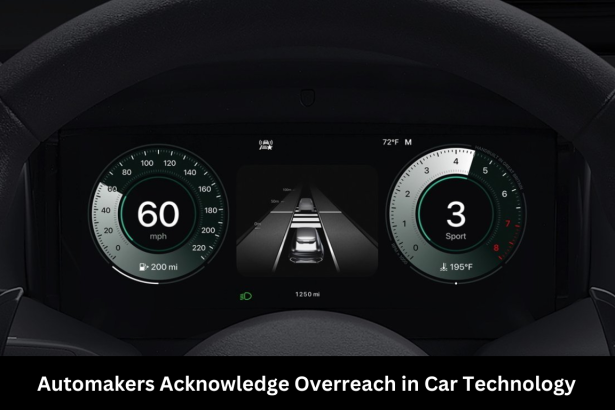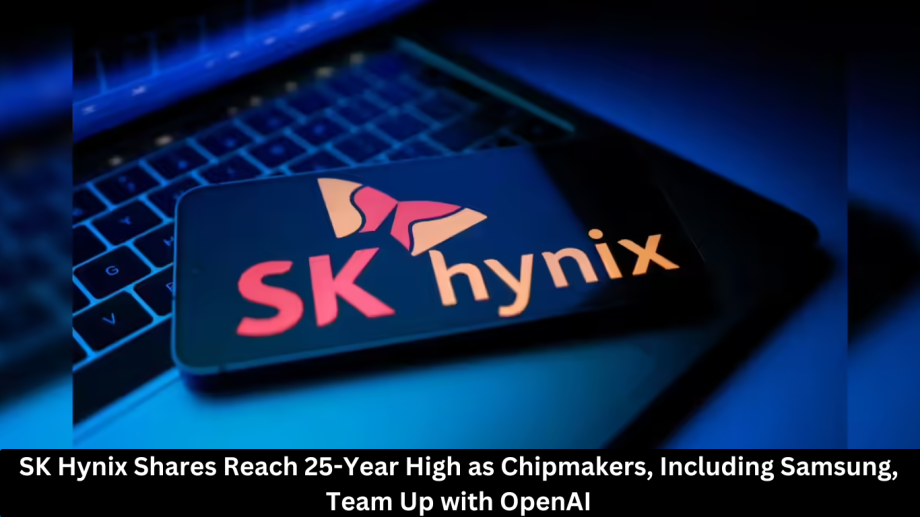In a major boost to South Korea’s semiconductor industry, SK Hynix shares surged to a 25-year high this week following the announcement of a strategic collaboration between leading chipmakers and artificial intelligence (AI) pioneer OpenAI.
- 📈 SK Hynix’s Stock Hits Multi-Decade High: What’s Driving the Surge?
- 🤝 The OpenAI Partnership: What It Means for SK Hynix and Samsung
- 💡 Why Memory is the Backbone of the AI Boom
- 🏦 Investor Reaction and Market Trends
- 🌐 Global Chip Race: Korea vs the World
- 🚀 AI Workloads Are Just Getting Started
- 🔮 What’s Next for SK Hynix and Samsung?
- Frequently Asked Question
- Why did SK Hynix shares reach a 25-year high?
- What is the nature of the partnership between SK Hynix, Samsung, and OpenAI?
- How does high-bandwidth memory (HBM) play a role in AI?
- How is Samsung benefiting from the AI chip boom?
- Is OpenAI planning to create its own AI chips?
- What does this mean for the broader semiconductor market?
- Should investors consider SK Hynix and Samsung as AI growth stocks?
- Conclusion
Samsung Electronics, another global semiconductor giant, also saw a notable uptick in its stock price amid growing investor optimism around AI-driven chip demand.
This strategic alignment signals a significant shift in the global AI ecosystem, where chipmakers are no longer just component suppliers but key innovation partners. Here’s an in-depth look at what this means for the industry, investors, and the future of AI computing.
More Read: Automakers Acknowledge Overreach in Car Technology
📈 SK Hynix’s Stock Hits Multi-Decade High: What’s Driving the Surge?
SK Hynix (KRX: 000660), the world’s second-largest memory chip manufacturer after Samsung, witnessed its stock price reach levels not seen since the late 1990s. The surge is primarily attributed to:
-
Increased global demand for AI-optimized memory chips, especially high-bandwidth memory (HBM).
-
Strengthening ties with OpenAI, which seeks more powerful, energy-efficient hardware for large-scale AI workloads.
-
Improved DRAM and NAND market conditions, following a long period of oversupply and price decline.
As of this week, SK Hynix shares have climbed over 40% year-to-date, outperforming most regional and global tech peers.
🤝 The OpenAI Partnership: What It Means for SK Hynix and Samsung
OpenAI, the creator of ChatGPT, has reportedly partnered with several global chipmakers, including SK Hynix and Samsung Electronics, to develop next-generation AI hardware. While the full scope of the partnership remains confidential, several key areas have been identified:
1. High-Bandwidth Memory (HBM) Supply
OpenAI’s expanding AI models — such as GPT-4 and its successors — require massive memory bandwidth to operate efficiently. SK Hynix is the market leader in HBM, with its HBM3E chips in high demand from NVIDIA, AMD, and other AI accelerator makers.
“HBM is no longer optional — it’s a necessity for next-gen AI. SK Hynix is at the center of this demand,” said a semiconductor analyst from KB Securities.
Samsung, although slightly behind SK Hynix in HBM development, is rapidly closing the gap and is expected to release its own HBM3E products later this year.
2. AI Chip Co-Design Initiatives
OpenAI is also rumored to be exploring custom AI accelerator chips — a move to reduce dependency on third-party hardware providers like NVIDIA. In this context, both Samsung and SK Hynix bring immense value:
-
Samsung Foundry capabilities could be leveraged to fabricate AI-specific chips.
-
SK Hynix’s memory technologies can be integrated directly into such custom silicon for optimized performance.
While OpenAI has not publicly confirmed a full custom silicon program, industry insiders speculate that a “Project Tigris” — a code name for in-house chip development — is already in motion, with SK Hynix and Samsung as critical partners.
💡 Why Memory is the Backbone of the AI Boom
AI models like ChatGPT rely heavily on parallel processing and data throughput. While GPUs from NVIDIA have received much attention, memory chips are just as critical.
AI Needs More Than Compute
Large Language Models (LLMs) need to process billions of parameters across vast datasets. This requires:
-
High bandwidth to shuttle data between memory and processors.
-
Low power consumption to reduce operational costs at hyperscale.
-
Thermal efficiency to manage heat in dense data center environments.
SK Hynix’s HBM3E products offer:
-
Bandwidth up to 1.2 TB/s per stack
-
40% improved power efficiency
-
Smaller physical footprint, ideal for AI accelerators
No surprise then that AI leaders like OpenAI, Google DeepMind, and Meta are all eyeing tight integration with memory makers.
🏦 Investor Reaction and Market Trends
SK Hynix Stock Performance
Following the OpenAI news and increased HBM orders, SK Hynix:
-
Closed at its highest level since 1999
-
Surpassed ₩170,000 per share, marking a multi-decade milestone
-
Attracted record-high foreign institutional buying
Analysts project up to 20% further upside as HBM demand accelerates.
Samsung Electronics Also Sees Gains
Samsung, while more diversified, still benefits significantly from AI trends. The company:
-
Reported strong Q3 earnings, partly due to recovery in memory prices.
-
Forecasts AI chip sales to double by 2026
-
Plans increased capital expenditure on foundry and advanced packaging facilities
Investor sentiment has improved markedly, with Samsung shares gaining over 15% in the past quarter.
🌐 Global Chip Race: Korea vs the World
With the U.S. and China locked in a geopolitical tech war, South Korea’s chipmakers are stepping up to fill the supply gap.
South Korea’s Strategic Edge
-
SK Hynix and Samsung dominate DRAM and NAND markets
-
Korea leads in HBM production capacity
-
Strong R&D pipelines backed by government and private investment
U.S. and Taiwan Competition
-
NVIDIA relies on TSMC for manufacturing but depends on Korean firms for memory.
-
Intel, AMD, and Micron are all investing in HBM and AI accelerators but remain behind in scale.
-
The U.S. CHIPS Act supports domestic fabs, but South Korea remains irreplaceable in memory tech.
With OpenAI now forming direct partnerships in Korea, the balance of AI hardware power may be shifting east.
🚀 AI Workloads Are Just Getting Started
This is just the beginning of what many analysts see as a multi-decade AI infrastructure boom. According to IDC and Gartner:
-
AI chip market to grow at 37% CAGR through 2030
-
HBM demand to grow 5x by 2027
-
Over 70% of new data centers to be AI-optimized within 3 years
For chipmakers like SK Hynix and Samsung, this means sustained, long-term demand and pricing power — a key shift from the traditional boom-bust memory cycle.
🔮 What’s Next for SK Hynix and Samsung?
SK Hynix:
-
Expanding HBM3E production lines
-
Eyeing entry into custom memory modules for AI
-
Potential future collaborations with OpenAI and Microsoft Azure
Samsung:
-
Launching next-gen HBM4 in 2025
-
Increasing investments in AI chip foundry services
-
Strengthening AI R&D and packaging technologies
Both companies are also exploring AI-powered manufacturing for yield improvement and cost reduction.
Frequently Asked Question
Why did SK Hynix shares reach a 25-year high?
What is the nature of the partnership between SK Hynix, Samsung, and OpenAI?
How does high-bandwidth memory (HBM) play a role in AI?
How is Samsung benefiting from the AI chip boom?
Is OpenAI planning to create its own AI chips?
What does this mean for the broader semiconductor market?
Should investors consider SK Hynix and Samsung as AI growth stocks?
Many analysts see both companies as well-positioned for long-term AI-related growth, particularly due to their leadership in memory and chip technology. However, as with all tech investments, risks include global competition, supply chain issues, and geopolitical tensions.
Conclusion
The collaboration between SK Hynix, Samsung, and OpenAI marks a pivotal moment in the evolution of the AI ecosystem. As the lines blur between hardware and AI software development, chipmakers are becoming strategic innovation partners, not just suppliers.
For investors, this signals a strong growth runway for Korean semiconductor stocks, particularly those tied to AI infrastructure.
For the tech industry, it highlights the critical importance of memory and compute co-design in achieving the next breakthroughs in AI performance.








